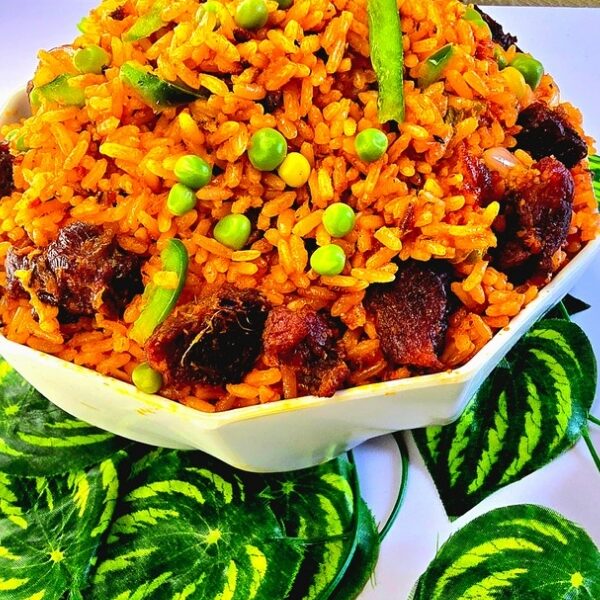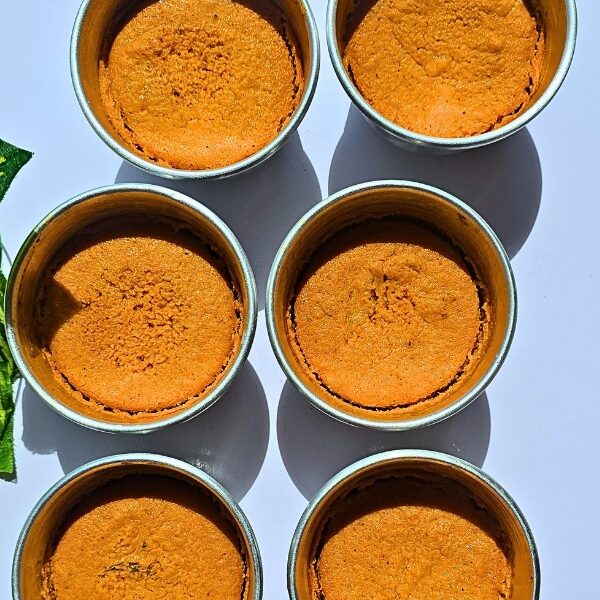You are about to learn how to make authentic Nkwobi ever.
If you’ve ever tasted Nkwobi, you’ll agree that it is one of the most irresistible traditional delicacies from Nigeria.
This dish is rich, spicy, and creamy, often enjoyed as a special treat with a chilled drink in many Nigerian restaurants and bars especially in the southeastern and southern parts of the country.
When I was a child, I’ve always wanted to be an adult so fast so I will be eating nkwobi. Lol, that was because it was a dish prepared mainly for my dad then and other elders as this delicacy is so rich and tagged food for the rich and packed with so much nutrients.
For foreigners or first-timers, these ingredients might sound exotic, but each one plays an important role in achieving the signature taste of this beloved Nigerian dish.
In this special curated recipe, you’ll not only learn how to prepare authentic Nkwobi at home but also understand the ingredients, their local names, and their substitutes. I’ll also share frequently asked questions to help beginners or curious food lovers around the world discover this gem of Nigerian cuisine.
What is Nkwobi?
Nkwobi is a traditional Igbo dish made with cow skin (locally called Pomo in Nigeria). The skin is thoroughly cooked until soft and then coated in a richly spiced palm oil sauce thickened with akanwu (potash).
It is often garnished with utazi leaves, which adds a slightly bitter taste that balances the richness of the palm oil.
While Nkwobi is commonly eaten in bars and restaurants as a “night-out” dish, it is also enjoyed at home by families who want a flavorful delicacy to share.
Ingredients Explained (Local & English Names)
For foreigners who may not be familiar with Nigerian ingredients, here’s a breakdown of the key items used in preparing Nkwobi:
- Pomo (Cow Skin) – This is the edible skin of the cow, thoroughly cleaned and boiled until tender. It is chewy, slightly meaty, and holds flavor very well.
- Palm Oil – A rich red oil extracted from palm fruits. It gives Nkwobi its iconic orange-red color and creamy texture.
- Akanwu (Potash) – A type of edible potassium carbonate that helps thicken the palm oil into a paste-like sauce when mixed.
- Crayfish – Ground dried crayfish adds a unique umami depth and local flavor to the sauce.
- Onions – Adds aroma and sweetness to balance the heat of the pepper.
- Ukpaka (Oil Bean) – A fermented seed that gives a nutty, slightly tangy flavor. It is often used in traditional southeastern Nigerian dishes.
- Ehuru (Calabash Nutmeg) – A local spice with a sweet, nutty aroma, similar to regular nutmeg but with a distinct African flavor.
- Pepper – Usually scotch bonnet or chili, providing the signature hotness Nigerians love.
- Maggi (Seasoning Cubes) – A common seasoning cube used in many Nigerian dishes for extra taste.
- Salt – For taste balance.
- Utazi Leaves – A slightly bitter leafy herb used as garnish. It balances the richness of palm oil and adds authenticity to the dish.
Quantity of Ingredients (Serves 4–5 person)
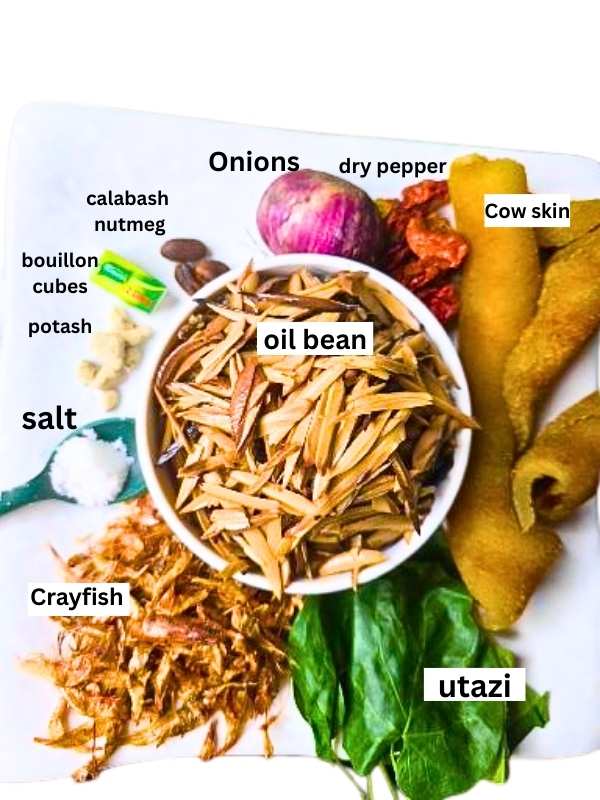
- 1kg Pomo (cow skin)
- 1 cup palm oil
- 2 tablespoons akanwu (potash, dissolved in water and filtered)
- 2 tablespoons ground crayfish
- 2 small onions (1 chopped, 1 for garnish)
- 2 tablespoons sliced ukpaka (oil bean)
- 1 tablespoon ground ehuru (calabash nutmeg)
- 2–3 scotch bonnet or local peppers (blended or ground)
- 2 seasoning cubes (Maggi or any brand)
- Salt (to taste)
- A handful of utazi leaves (washed and shredded)
Step-by-step procedure.
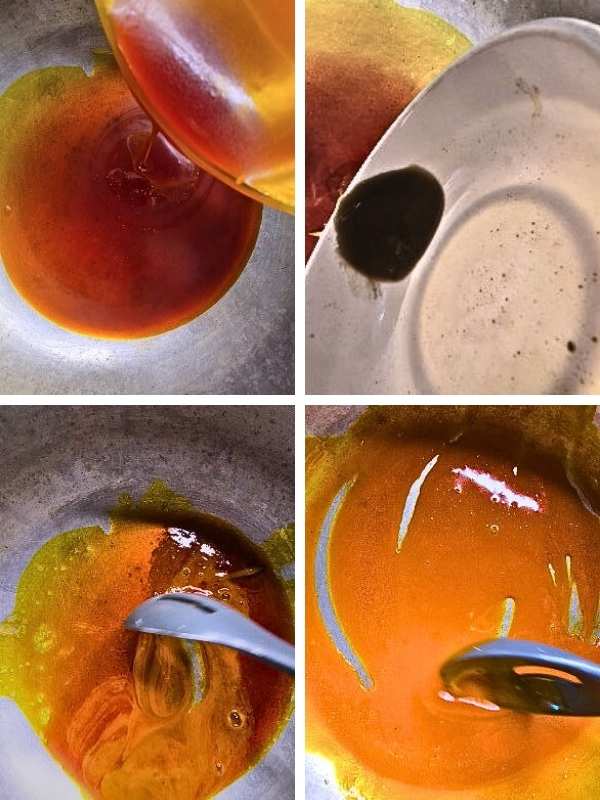
Step 1: Prepare the Cow Skin (Pomo): Wash the cow skin thoroughly and cut it into bite-sized chunks. Boil with seasoning cubes, and salt until very soft. This may take about 1–2 hours depending on the thickness of the cow skin.
Step 2: Prepare the Palm Oil Sauce: Pour the palm oil into a clean dry pot. Gradually add the filtered akanwu (potash water filtered with sieve. Discard the bottom path for it will be sandy) while stirring continuously.
The oil will change from red to a thicker, yellowish paste. This is the base for your Nkwobi sauce.
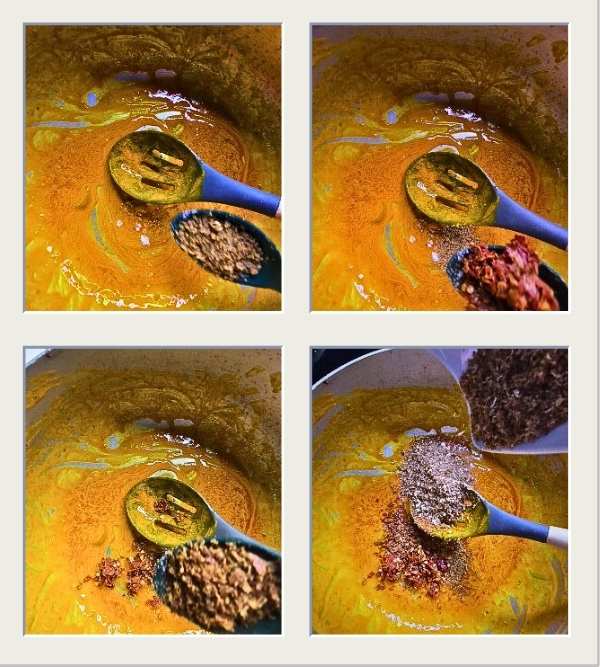
Step 3: Season the Sauce: Add ground crayfish, ground ehuru, blended pepper, sliced onions and a pinch of salt. Mix well until the sauce is smooth.
Step 4: Add Ukpaka (Oil Bean): Mix in the sliced ukpaka for that authentic Igbo taste.
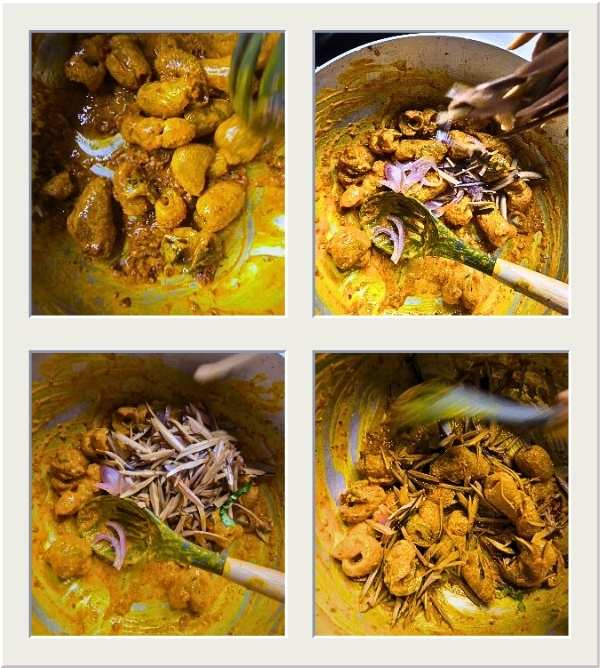
Step 5: Combine with Cow Skin: Add the cooked kpomo chunks into the sauce. Stir thoroughly until each piece is well coated with the rich palm oil mixture.
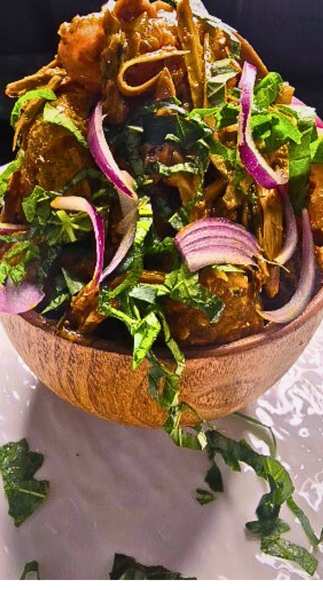
Step 6: Transfer the Nkwobi into a traditional wooden bowl (or any bowl of choice).
Step 7: serve with finely chopped onions and utazi leaves.
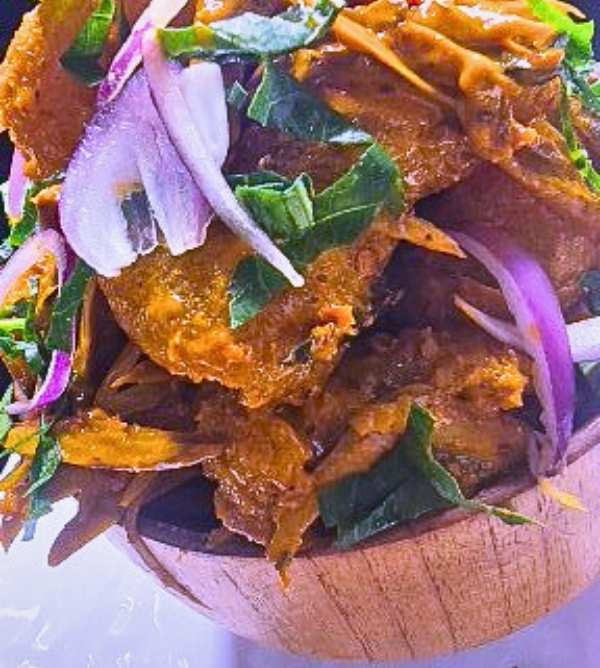
Best enjoyed with a chilled drink or as a standalone evening delight.
Why you should try out this Nkwobi recipe
Authenticity: A true taste of Nigeria, especially the Igbo culture.
Rich Flavor: A perfect balance of spicy, nutty, and slightly bitter flavors.
Social Food: Often enjoyed in groups, making it perfect for bonding.
Exotic Experience: For foreigners, it’s a chance to taste something unique, beyond regular stews or grilled meats.
Frequently Asked Questions (FAQs) are:
1. What is the difference between Nkwobi and Isi Ewu?
Both are popular Igbo delicacies. Nkwobi is made with cow skin (pomo), while Isi Ewu is made with goat head. The sauce preparation is almost the same, but the protein differs.
2. Can I make Nkwobi without potash (akanwu)?
Potash is essential because it transforms the palm oil into a thickened paste. However, if unavailable, some people substitute with baking soda or kaun (local rock salt), though the taste may slightly differ.
3. What can I use instead of Pomo (cow skin)?
If cow skin is hard to find, you can substitute with cow foot or even goat meat, but it won’t be traditional Nkwobi anymore.
4. Is Nkwobi healthy?
Yes, in moderation. Pomo is low in calories but does not contain much protein. Palm oil contains healthy fats but should not be consumed excessively. Adding utazi leaves helps balance the richness.
5. Can foreigners enjoy Nkwobi?
Absolutely! While it may be an acquired taste, many foreigners who try Nkwobi love its unique texture and spicy flavor.
6. How do I serve Nkwobi?
Traditionally, Nkwobi is served in a wooden bowl, garnished with onions and utazi leaves. It pairs perfectly with cold drinks, especially beer, or can be eaten as a main dish.
7. Can I store leftover Nkwobi?
Yes, you can refrigerate it for up to 2 days. Warm slightly before serving, but avoid reheating too many times as it can lose flavor
Nkwobi is more than just food—it is culture, history, and celebration all served in one bowl.
Whether you’re Nigerian living abroad or a foreigner curious about African cuisine, this dish is worth trying. With cow skin (pomo), palm oil, crayfish, and spices like ehuru, you’ll discover a world of taste that’s bold, vibrant, and authentically Nigerian.
If you’re looking to explore traditional African recipes, Nkwobi is the perfect place to start.
You may also like:

